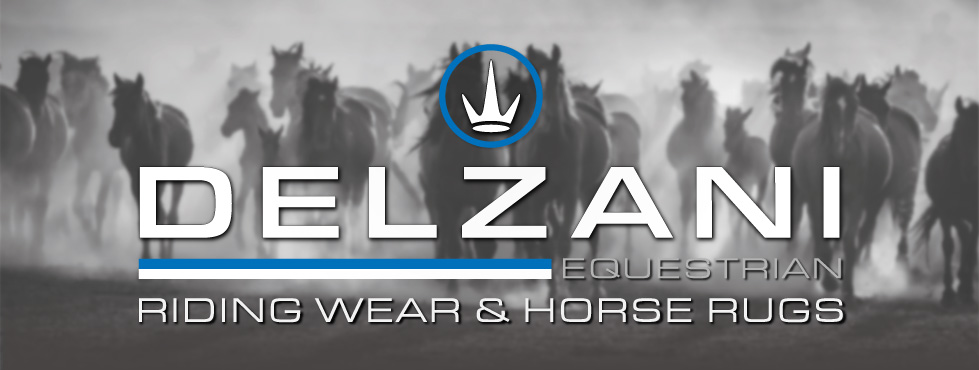How Fly Mesh Boots Help Horses in Australia: Benefits, Fit and Everyday Use

Fly Mesh Boots for Horses in Australia - Do They Really Work?
Updated September 2025
A practical guide for Australian horse owners on the real benefits of fly mesh boots - how to fit them correctly, when to use them, and how to keep legs cool and protected all summer.
Biting insects aren’t just irritating in Australia; they’re a daily management challenge that impacts your horse’s behaviour, hooves, and skin. Flies, mozzies, midges, and march flies zero in on the cannon bone and fetlock where skin is thinnest. The cycle starts with stamping, then pacing, chipped hooves, loose shoes, and raw skin that quickly spirals into sores and dermatitis. If you’ve wondered whether fly mesh boots actually break that cycle in Australian heat, the short answer is yes, provided you choose breathable, structured mesh, fit them correctly, and use them with local conditions in mind.
This guide breaks down the real-world pros and cons of fly boots, how to size and fit them, when to use them in coastal humidity or dry inland heat, and how to care for them so they last. Throughout, we’ll reference Delzani Fly Mesh Horse Boots sold as a set of four because they’re designed for daily turnout and travel in Australian paddocks, not just for tidy photoshoots.
Why fly boots matter when stamping turns destructive
Lower legs are prime insect targets: less hair, thinner skin, and harder for horses to defend. Stamping is their natural response, but thousands of impacts each week add up to hoof cracks, loosened clenches, bruised soles, and irritated tendons. Skin takes the brunt too, with inflamed pasterns and fetlocks becoming gateways for dermatitis in warm, damp conditions.
A quality fly boot acts as a breathable barrier, stopping insects from landing in the first place. No landing → no bites → no stamping. The benefits show quickly: calmer horses, healthier skin, sounder hooves, and paddocks without cratered stamping holes.
Do legs overheat under boots in summer?
This is the number one concern for Australian riders. The key is mesh structure. Soft, floppy fabrics cling and trap sweat; structured, open-weave ballistic mesh holds away from the skin, allowing airflow. Delzani’s Fly Mesh Horse Boots are built with breathable ballistic mesh that “stands off” for ventilation. Comfort padding is used only at seams no heavy neoprene wrapping the whole leg. Even in coastal humidity, daily checks show legs often stay cooler than the constant stamping and sweating without boots.
Getting the fit right: length, contour, and strap order
Fit is everything. Most slipping, twisting, or rubbing comes from boots that are the wrong length or poorly fastened. Front boots should finish below the knee and above the coronet; hinds can run longer but must clear the hock and ground. Delzani designs two shorter fronts and two longer hinds to match anatomy rather than forcing one tube to fit all four legs.
Always fasten the middle strap first to set alignment, then the top for security, and finally the bottom to prevent flare. You want firm, even contact without over-tightening; cranking straps tighter won’t fix a poor length choice and often causes rubs.
Introducing boots to sensitive or playful horses
Some horses accept boots immediately; others need easing in. Start with short supervised sessions, then build up. If a horse fusses, adjust the strap order and snugness. For “gear testers” that tug at everything, durability is key. Ballistic mesh and double-stitched stress zones prevent quick destruction. Rotate left/right every few days to balance wear and always check paddocks for snag points.
Where fly boots shine and when to skip them
Fly boots are most effective in:
- Coastal or tropical zones with relentless mozzies and midges.
- Dry inland areas where bush flies target fetlocks all day.
- Float yards at shows or clinics where horses tie up calmly with fewer distractions.
Skip boots in deep mud, burr patches, or during active skin infections that need air and treatment. In those cases, manage insects with timing, stable fans, repellents, and reintroduce boots once conditions improve.
Regional care tips: coast, inland, and temperate south
Coast & tropics: Insects peak at dawn and dusk. Use boots in those hours and rinse often to prevent salt build-up. Pair with fly rugs and masks for complete coverage.
Dry inland: Dust management is key. Boots stop flies but still need daily brushing or hosing to maintain airflow. Bonus: less stamping means less sand churn in yards.
Temperate south: Boots are useful through warm months or after rain when fly populations spike. During cool snaps with few insects, give legs a breather overnight.
Caring for fly boots so they last
Treat boots like tack. Knock off dust daily, hose when dirty, and shade-dry to prevent UV damage. Brush Velcro clean to keep it gripping tight. Inspect stitching weekly and fix minor wear before it spreads. With basic care, a good set lasts multiple seasons.
Fitting step-by-step
Stand your horse square. Wrap the boot so it clears the coronet and knee/hock. Fasten middle strap first, then top, then bottom. Walk ten steps, check for twist, and adjust as needed. Repeat behind with longer hind boots.
Common fitting problems solved
Slipping: Usually a length issue. Don’t over-tighten; refit with correct size and strap order.
Rubbing: Caused by grit, uneven fit, or pre-irritated skin. Clean legs, rinse boots often, and treat skin before reusing.
Twisting: Prevent by fastening middle strap first and ensuring boots contour properly.
Why Delzani Fly Mesh Boots work for Australian riders
Delzani Fly Mesh Horse Boots are built from ballistic mesh that keeps its shape for airflow and durability. Soft padding only where it matters prevents rubs without trapping heat. Three wide Velcro straps make fitting easy, while the set of four includes two fronts and two hinds for proper coverage. They rinse clean, dry fast, and stand up to daily turnout in Australian conditions.
For under-saddle work like jumping or flatwork, swap to Delzani Neoprene Sports Tendon Boots, designed for impact absorption and tendon support. Different boots, different jobs and both last longer when used as intended.
This guide is general advice only. Always supervise when introducing new boots. For ongoing swelling, lameness, or skin issues, seek veterinary guidance.
Stop the stamping, protect hooves, and make summer turnout calmer. Explore Delzani Fly Mesh Horse Boots today, tough enough for Australian summers, gentle enough for daily wear.
Written by Jane Griffiths - An experienced Australian horse owner and product developer with over three decades immersed in equestrian life. Jane has spent years refining horse rugs, tack, and riding apparel to better suit Australian climates. She has enjoyed countless weekends at gymkhanas, show jumping events, and pony club competitions with her daughter, and still loves hitting the trails with friends whenever she can. Her lifelong passion for horses and hands-on understanding of equine comfort continue to shape her practical, rider-first approach to horse care and product design.
Related Equestrian Guides
Equestrian Horse Boots & Leg Wraps
Find your perfect pair of equestrian boots and wraps at Delzani. Our range of high-quality boots and wraps offers protection and support for your horse during training and competition.
Fly Mesh Boots Troubleshooting & Care: Stop Slipping, Rubbing and Wear
Tired of fly boots that slip, rub, or wear out halfway through summer? This guide shows how the right fit, mesh and care routine keep boots secure, breathable and long-lasting plus why Delzani Fly Mesh Boots are built to handle Australian conditions.
Tendon Boots for Horses: Correct Fit, Heat Management & Real Protection
Learn what tendon boots really protect, how to fit them correctly, and the truth about heat build-up in Aussie summers so your horse stays safe, cool, and performing at their best.
How to Fit Tendon Boots Correctly: Protecting Your Horse’s Legs Without Overheating
Struggling with slipping boots, rubs, or heat build-up? Learn how to fit tendon boots correctly for real protection. Discover breathable, secure options built for Australian conditions that keep your horse’s legs safe, cool, and comfortable in every ride.
Can Horses See Through Fly Masks Clearly? Vision & Safety in Australia
Can horses see clearly through fly masks? Yes. This guide explains how mesh veils, deluxe bonnets, and the Apollo SkyBreeze differ in vision, safety, and comfort, helping Australian riders choose the right style for their horse.
Can Fly Masks Cause Sweating or Rubbing? What Australian Owners Need to Know
Australian guide to horse fly masks, covering sweating, rubbing, fit, daily care, climate considerations, and how Delzani’s breathable designs protect horses from flies, dust, and UV without causing irritation.












